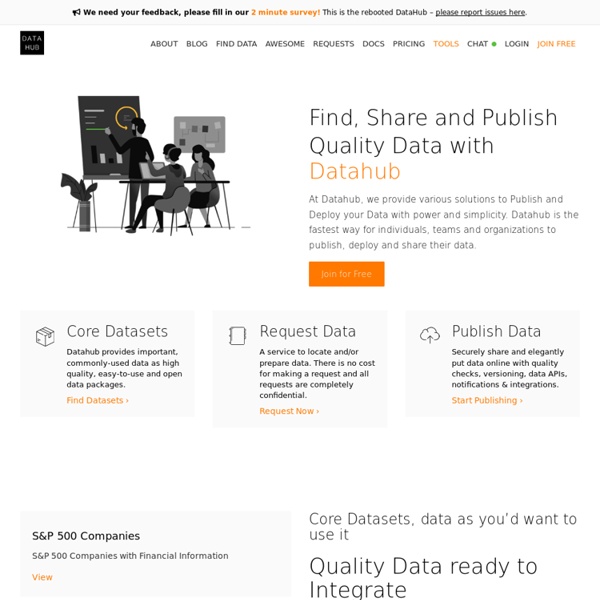



OntoWiki — Agile Knowledge Engineering and Semantic Web CubeViz -- Exploration and Visualization of Statistical Linked Data Facilitating the Exploration and Visualization of Linked Data Supporting the Linked Data Life Cycle Using an Integrated Tool Stack Increasing the Financial Transparency of European Commission Project Funding Managing Multimodal and Multilingual Semantic Content Improving the Performance of Semantic Web Applications with SPARQL Query Caching searchFAST Welcome to the new searchFAST user interface. This new interface simplifies the process of heading selection, in an easy to use one-page design. FAST subject headings were developed by adapting the Library of Congress Subject Headings (LCSH) with a simplified syntax, retaining the very rich vocabulary of LCSH while making the schema easier to understand, control, apply, and use. The new interface design combines search box, brief results list, and full view of a selected record on a single page. Several indexes and the ability to restrict the result to a desired FAST facet increase searching accuracy. The default result ranking is by usage, giving the most likely candidate heading near the top of the result, although alphabetic and facet order options are easily available.
global.1751_2014 *********************************************************** *** Global CO2 Emissions from Fossil-Fuel Burning, *** *** Cement Manufacture, and Gas Flaring: 1751-2014 *** *** *** *** March 3, 2017 *** *** *** *** Source: Tom Boden *** *** Bob Andres *** *** Carbon Dioxide Information Analysis Center *** *** Oak Ridge National Laboratory *** *** Oak Ridge, Tennessee 37831-6290 *** *** USA *** *** *** *** Gregg Marland *** *** Research Institute for Environment, Energy *** *** and Economics *** *** Appalachian State University *** *** Boone, North Carolina 28608-2131 *** *** USA *** *********************************************************** All emission estimates are expressed in million metric tons of carbon. To convert these estimates to units of carbon dioxide (CO2), simply multiply these estimates by 3.667. Per capita emission estimates are expressed in metric tons of carbon. Population estimates were not available to permit calculations of global per capita estimates before 1950.
Tutorial 4: Introducing RDFS & OWL Next: Querying Semantic Data Having introduced the advantages of modeling vocabulary and semantics in data models, let's introduce the actual technology used to attribute RDF data models with semantics. RDF data can be encoded with semantic metadata using two syntaxes: RDFS and OWL. After this tutorial, you should be able to: Understand how RDF data models are semantically encoded using RDFS and OWLUnderstand that OWL ontologies are RDF documentsUnderstand OWL classes, subclasses and individualsUnderstand OWL propertiesBuild your own basic ontology, step by stepEstimated time: 5 minutes
PubChemRDF Release Notes V1.6 beta (See the V1.5.2 beta Release Notes)Total number of triples: (last update on: )for more details, please see Table 2 1. Introduction Semantic Web technologies are emerging as an increasingly important approach to distribute and integrate scientific data. Complete_TAVG_complete % This file contains a detailed summary of the land-surface average % results produced by the Berkeley Averaging method. Temperatures are % in Celsius and reported as anomalies relative to the Jan 1951-Dec 1980 % average.
MooWheel: a javascript connections visualization library View the project on Google Code 06.29.2008 version 0.2 now available! get it. What's new? Looking for version 0.1 instead? Using SPARQL to access Linked Open Data Lesson Goals This lesson explains why many cultural institutions are adopting graph databases, and how researchers can access these data though the query language called SPARQL. Table of contents Many cultural institutions now offer access to their collections information through web Application Programming Interfaces. While these APIs are a powerful way to access individual records in a machine-readable manner, they are not ideal for cultural heritage data because they are structured to work for a predetermined set of queries. For example, a museum may have information on donors, artists, artworks, exhibitions, and provenance, but its web API may offer only object-wise retrieval, making it difficult or impossible to search for associated data about donors, artists, provenance, etc.